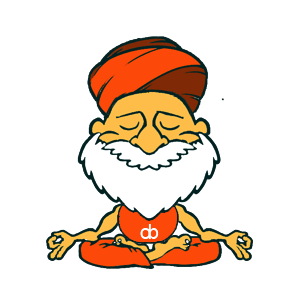Body language – it's the silent orchestra that accompanies every interaction, offering a wealth of insights if you know where to look and what to listen for. In the high-stakes environment of a job interview, a candidate's non-verbal cues can speak volumes about their character, confidence, and compatibility with a role. For recruiters, interpreting these cues is essential, providing a richer understanding of the person sitting across the table.
The Subtle Symphony of Non-Verbal CommunicationBefore we delve into specifics, it's crucial to understand that body language isn't a definitive science. Cultural norms, personal habits, and even simple nervousness can influence how a candidate presents themselves. However, with keen observation and a dose of intuition, these cues can be invaluable.
1. The Handshake
What It Reveals: Confidence, assertiveness, and openness.
Interpretation: A firm handshake typically conveys confidence and assuredness. A limp one might indicate lack of enthusiasm or nervousness. If the candidate combines the handshake with eye contact, it's often a sign of genuine openness.
2. Posture
What It Reveals: Attitude, comfort level, and professionalism.
Interpretation: An erect posture can convey confidence and respect for the interview process. Conversely, a slouched posture might indicate disinterest or a lack of preparation.
3. Eye Contact
What It Reveals: Confidence, honesty, and attentiveness.
Interpretation: Steady eye contact (without being overly intense) often indicates a candidate's confidence and engagement. Constantly avoiding eye contact might be a sign of nervousness or, in some cases, evasiveness.
4. Facial Expressions
What It Reveals: Emotional responsiveness and authenticity.
Interpretation: Genuine smiles, raised eyebrows, or nods can indicate interest and understanding. Conversely, clenched jaws or tightened facial muscles might suggest stress or discomfort.
5. Hand Gestures
What It Reveals: Passion, clarity of thought, and communication style.
Interpretation: Using hands to emphasize points can be a sign of passion and engagement. Overly flamboyant gestures might indicate a penchant for drama or exaggeration, while restrained movements might point to a calm and measured approach.
6. Fidgeting
What It Reveals: Anxiety, impatience, or restlessness.
Interpretation: Excessive fidgeting, like tapping feet, twirling hair, or frequently adjusting attire, can be signs of nervousness. However, it's essential to differentiate between nervous habits and potential indicators of disinterest or impatience.
7. Mirroring
What It Reveals: Empathy, rapport-building, and attentiveness.
Interpretation: If a candidate subconsciously mimics your gestures or posture, it's often a sign of rapport and a genuine connection. It indicates an ability to adapt and bond, essential for team dynamics.
8. Space Utilization
What It Reveals: Dominance, confidence, or nervousness.
Interpretation: Leaning in can suggest interest, while leaning away might indicate discomfort. Similarly, spreading out belongings or occupying a larger space might show dominance or high confidence.
Tips for Recruiters:1. Stay Objective: While body language offers insights, it shouldn't be the sole determining factor. It's a piece of the puzzle, complementing resumes, interviews, and references.
2. Cultural Sensitivity: Understand that cultural backgrounds can significantly influence body language. What's considered confident in one culture might be deemed arrogant in another.
3. Ask and Clarify: If a specific body language cue raises a concern, address it indirectly in the conversation. For instance, if a candidate seems overly nervous, you might ask if they find interviews stressful and offer reassurances.
4. Self-awareness: Remember, it's a two-way street. Your body language also influences the dynamics of the interview. Being aware of your non-verbal cues ensures a more open and balanced conversation.
In Conclusion: The Dance of Unspoken DialogueIn the world of recruitment, the quest is not just for skills, but for character, compatibility, and potential. While words provide a script, body language offers an unedited, genuine glimpse into a candidate's character. As recruiters, tuning into this silent symphony ensures that we truly 'see' the person behind the resume, making informed and holistic hiring decisions.





